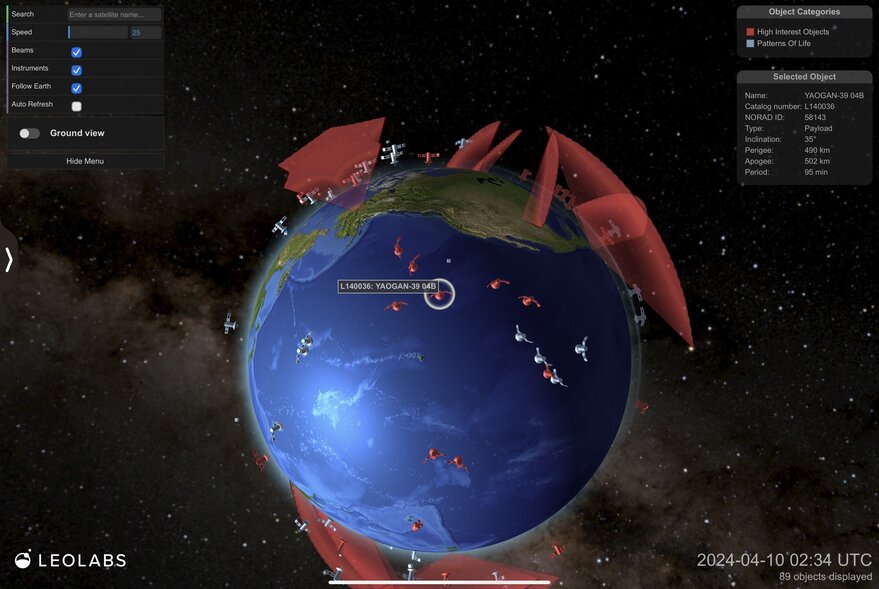COLORADO SPRINGS – LeoLabs, the Silicon Valley startup mapping activity in low-Earth orbit, is relying on artificial intelligence to spot anomalous satellite operations.
A LeoLabs visualization tool shown at the 39th Space Symposium tracks maneuvers performed by satellites that change their orbits frequently. And it highlights maneuvers conducted by satellites that did not typically perform them.
Three of the first satellites in a Chinese communications constellation that could include 12,000 satellites, for example, remained in stable orbits for months after they were launched in late 2023. “Then at the same time, all three executed an organized maneuver campaign,” Owen Marshall, LeoLabs space domain awareness applications analst, told SpaceNews. With onboard electric propulsion, the satellites “raised their orbits a little over 100 kilometers in 20 or 30 days,” he added.
With the help of AI, LeoLabs generates reports on abnormal orbital activity. Weekly reports rank the top 50 satellites in terms of anomalies.
In the future, LeoLabs will program its radar network to autonomously follow satellites after an anomaly is detected, said LeoLabs Japan Director Kohei Fujimoto.
Maneuver Detection
At the 2023 Space Symposium, LeoLabs demonstrated its ability to detect spacecraft maneuvers autonomously. That tool has improved significantly in the last year, Fujimoto said.
Initially, LeoLabs could confirm maneuvers after tracking a spacecraft through three post-maneuver orbits. Now, a satellite’s new location often can be identified after a single orbit, Fujimoto said.
LeoLab is making swift progress in applying AI, Fujimoto said, because the company can train algorithms with data gathered over eight years of operating space-tracking radars.
